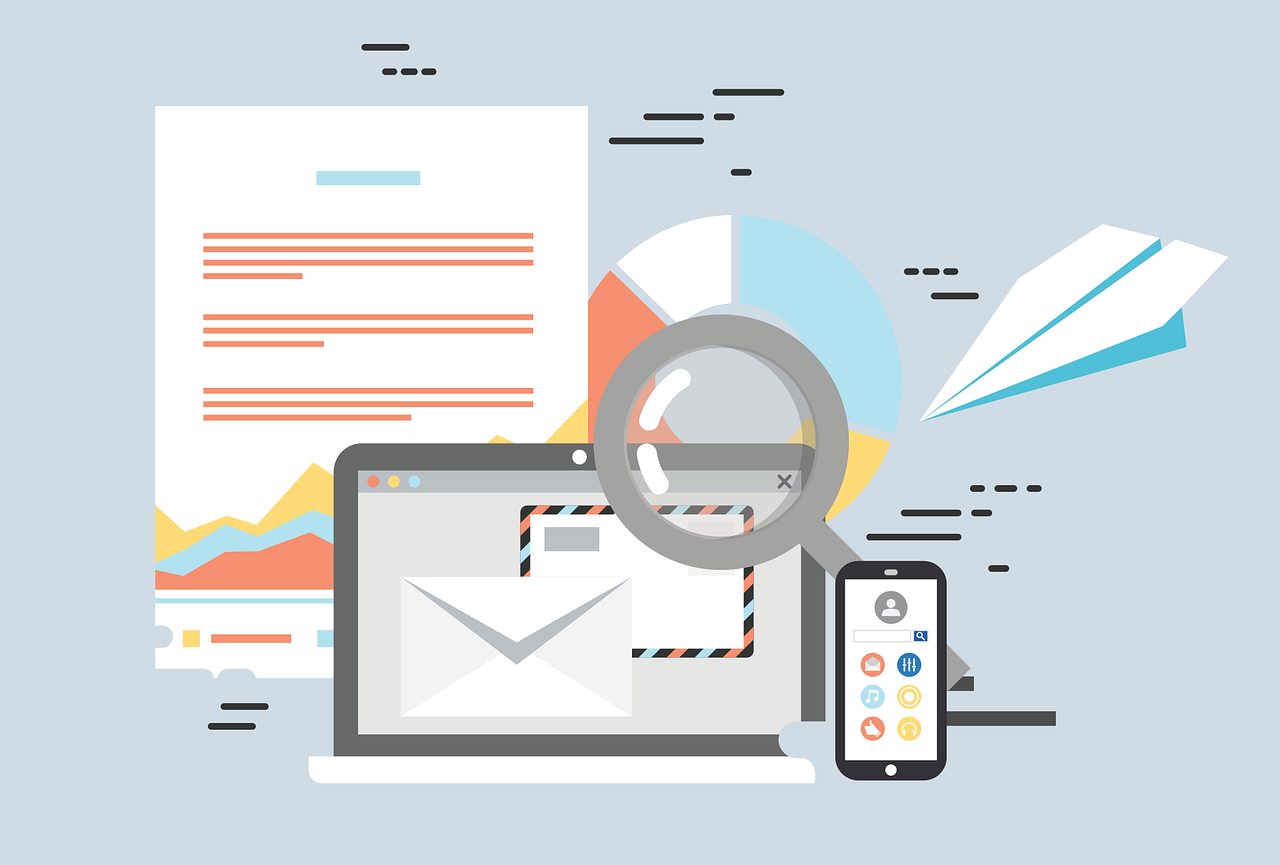If you own a business, you are probably always looking for new outlets with which to increase traffic to your website. You are not alone. Every business has its struggles in getting new and greater amounts of visitors to click on a link and visit their website. On top of that, many people also struggle to keep visitors exploring their website past the first page and enticing them enough to return to the website at a later date. While increasing web traffic to your business is difficult, it is not impossible. There is no easy, full proof solution to the matter, but there are tangible steps that can be made to increase your traffic incrementally and to maintain that increase as you go along. Managing a website does not have to become an additional headache on top of managing the day to day operations of your business. This article is here to walk you through some achievable, baseline, steps that you can take to get your website running full throttle. We’ll discuss traffic in terms of quantity and quality, the key role that social media plays in your website’s operation, post consistency, advertising options, visual tricks, and key ways to retain and manage the retention of visitors. With these tools, you can drive traffic into your website and manage your website with maximum efficiency.
How much Traffic?
How much web traffic is enough? I can’t answer that question, but you can. However, you may not know how to answer that question, and that is where this article comes into play. There is no magic number of visitors that will make your website and business a success. There are plenty of websites that have millions of visitors with comparatively small returns, and there are websites that have a mere few thousand visitors that have comparatively large returns. For your website to be a success, you must first understand how many visitors you need to visit your site to be successful. You also need to know what your plan is for targeting and catering to those visitors. If you don’t readily know solutions to these two problems, you are already setting yourself back.
Once you’ve determined how many revenue building, or buying, visitors your website needs to produce an adequate profit, you can begin to expand your scope and start targeting larger quantities of users. What I mean is, you need to target well above and beyond your bottom line. The minimum is not an option, because the minimum number of visitors to your website won’t become the minimum number of purchases and customers.
Quality vs Quantity of Visitors
There is a very important difference between quality visitors and quantity of visitors. Taking this point even further, not every quality visitor is a purchasing visitor or customer. To truly understand who and how to target potential customers on the internet, you must first understand the differences and importance of both quality and quantity visitors. Ideally, you will have both quantity and quality visitors. You want as many people as possible to view your website as frequently as possible; however, you also want visitors who are going to make a purchase on your website or invest their time and money into what you have to offer. These are the quality visitors, and they are ultimately who will determine the success or failure of your website.
However, it is futile to target only quality visitors because there is no way to determine those visitors from the rest of the electronic masses. Here lies one of the most common mistakes that new website managers and entrepreneurs make, they attempt only to specifically target the people they deem most likely to buy from them. This is a critical error and it eliminates many more quality visitors than it engages. When advertising to visitors, you need to appeal to quantity as much as you do quality. Your website will act as the sieve that separates the two and converts quantity customers into paying, quality customers. This doesn’t mean you should be as generic as possible and cast as large a net as you can, but it means that you don’t need to target individuals. Rather, you should be targeting broad characteristics that you associate with the benefits and fulfillment of your products and services.
Build Your Social Media Platforms
Social Media is not just a time-waster, it is a tool. If you do not see it as such, you are losing out on billions of potential contacts, clicks, and visits. It is that simple. Social Media is a great first point of contact between most businesses and potential new customers and clients. Social Media comes with the additional ability to target users based on their interests, as well as an array of other specifiers that can be targeted and tailored according to your own description. This means that you can target the demographics that you believe most need or want what your business has to offer, and you can further narrow or widen those demographics with a variety of additional options and tools.
Tying into the section above, this means that you can target both quantity and quality of users. Most social media platforms will allow you to run campaigns as large or small as you desire, targeting users all over the globe or just in your own backyard. The fact of the matter at hand is that you need to be using social media as a regular part of your marketing efforts. Social Media is a cheap and effective tool that can increase traffic to your website with ease.
Post Regularly
Whether you are managing a website, a social media profile, or both, you need to be posting new content regularly. Content is what makes your page mean something to a user. Whether they come to your Facebook page for industry-specific advice, humor, shopping, or for a variety of other reasons, they need to be able to attach their own meaning to your page and website. If there is nothing for them to view on webpages associated with your business and brand, they will not associate your business with anything, and that is beyond bad. Content is what engages users with your brand and it’s what keeps them coming back.
The best way to get users to latch onto and become a follower of your content is to create content regularly. This need is further reinforced by how Social Media Algorithms decide who’s content and pages to show in an individual user’s feed. The more content you have available and the shorter the gaps between posts are, the likelier that Facebook and other related search engines will display your content to both users that follow you and even those who don’t.
Don’t Be Afraid of Paid Advertisements
Nobody likes spending money without the guarantee of something in return. You are probably wired the same way- to be apprehensive of spending money on advertising, especially when you are just starting out. However, you don’t need to be afraid of it. There are free ways to build your
and web traffic without spending a dime on advertising, however, advertising is far from obsolete. Paid Advertising is a powerful tool at your disposal. As an added incentive, most paid advertising platforms offer a variety of options that can be tailored to minimize advertising costs and expand your return of quality customers. Better yet, most paid advertising platforms are also designed with you in mind. This means that their backend is built to be easy to learn, easy to navigate, and easy to manage. This means that while you are spending some money on advertising, you are also freeing up your time by taking advantage of existing and often automated systems that can be adjusted whenever you see the need.
Don’t Rely Too Heavily on Paid Advertisements
With the above section being taken into consideration, throwing all of your available funds into advertising isn’t a solution that holds up on its own. Paid Advertising is a powerful tool, but that tool is nearly obsolete without a solid foundation beneath it. The truth is that if your website is lackluster, if your social media content is updated irregularly, or if your products and prices just aren’t an appealing combination- there’s nothing that paid advertising can do for you.
Paid Advertising is a tool, but it should not be used as a crutch. Rather, your marketing should be multifaceted. If you aren’t performing Search Engine Optimization (SEO) on a regular basis, if you aren’t creating quality content weekly or even daily, if you aren’t taking advantage of the other tools available to you, you are setting yourself up for failure. Worse than that, you are losing money by paying to advertise an unacceptable website. Make sure that you are using a diverse number of strategies that can build off one another. Keep your content updated regularly, optimize it, and make sure that you are providing those targeted by your advertisements with quality content to keep them engaged in your business and what it has to offer.
Make Yourself Pop
Your content needs to stand out. As important as it is to have quality substance to your content, you also need a healthy amount of sparkle and flash. In other words, you need something unique to help your content stand out from the crowd. Getting users to visit your website is one thing, and tools such as paid advertisements are great for it. However, getting users to stay on and revisit your website is a trickier matter. While paid advertisements, SEO, and a strong social media following can certainly help, your content needs to be your best feature.
Fortunately, there are dozens of ways to make your content pop and to help your website feel unique. A good first step is to create custom visuals. These can be photographs, videos, or even illustrations that are unique to your website. The human brain recognizes and processes images much faster and much more efficiently than it does words, so take advantage of this innate behavior. Another way to make your content pop is to talk about interesting subjects or to make interesting points about general subjects. Don’t just copy what everyone else is doing, but find your own method.
It’s What You Do with Those Visitors
You are the most important factor when it comes to determining whether a visitor visits your website or not. You are also the most important factor when it comes to determining whether a user on your website is a quantity visitor or a quality visitor. You are also responsible for tailoring their experience to your website. You get to choose what content you display where. You get to choose the navigation options available through menus and internal links. Just getting the traffic is only part of the equation when managing a quality website. The other part of the equation is how you intend to engage and retain them. Remember that just having traffic to your website doesn’t determine the success of sales and customer retention. You are equally responsible for creating a website and content that is conducive to the sales process, and one that meets the needs and expectations of all visitors.
Conclusion
Getting people to visit your website isn’t as difficult as it may seem. Thankfully social media and search engines are both designed with tools to make that as easy and efficient as possible. You can target as broad or as narrow of a demographic as possible. You can target as generally or specifically as possible. However, it is important to remember that the advertising and traffic building process isn’t where you make the definitive cutoff for quantity vs quality customers. Rather, you need to let your website act as a natural sieve for those best suited to want something from it. This doesn’t mean you should target as many people as possible initially, but it does mean that you don’t have to nitpick when trying to increase traffic to your website. The key here is to make sure that your website is ready for any and all traffic that comes through.




















